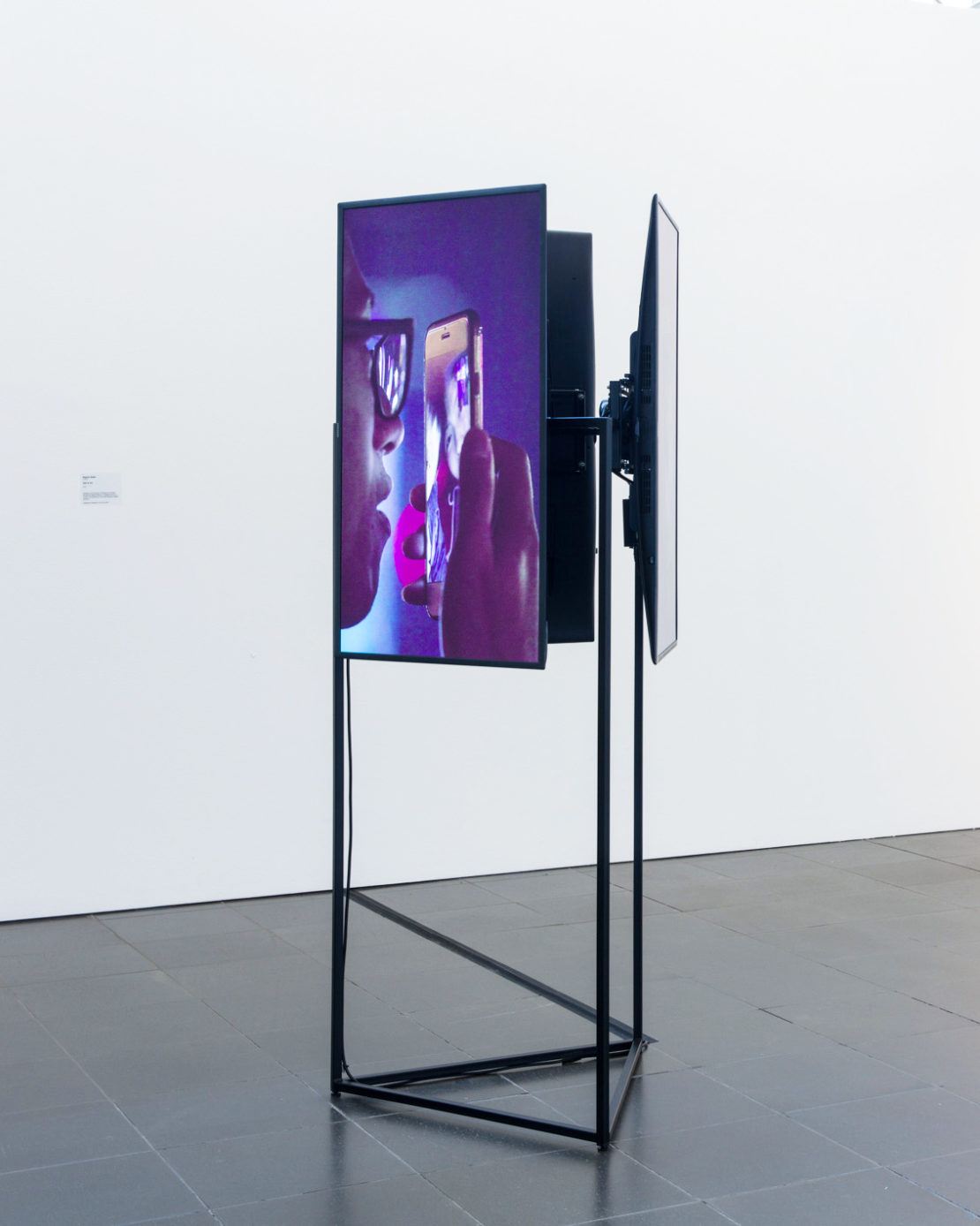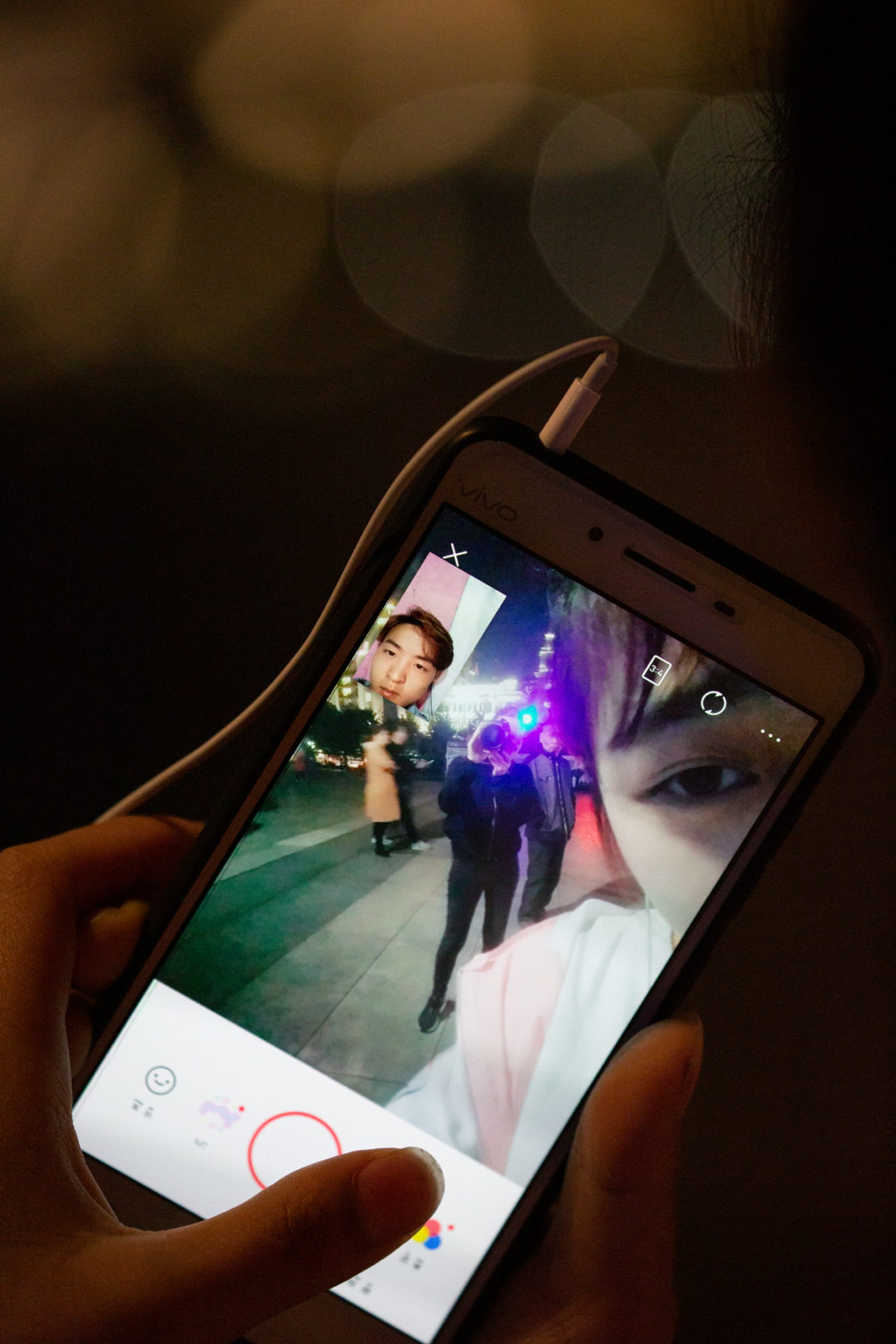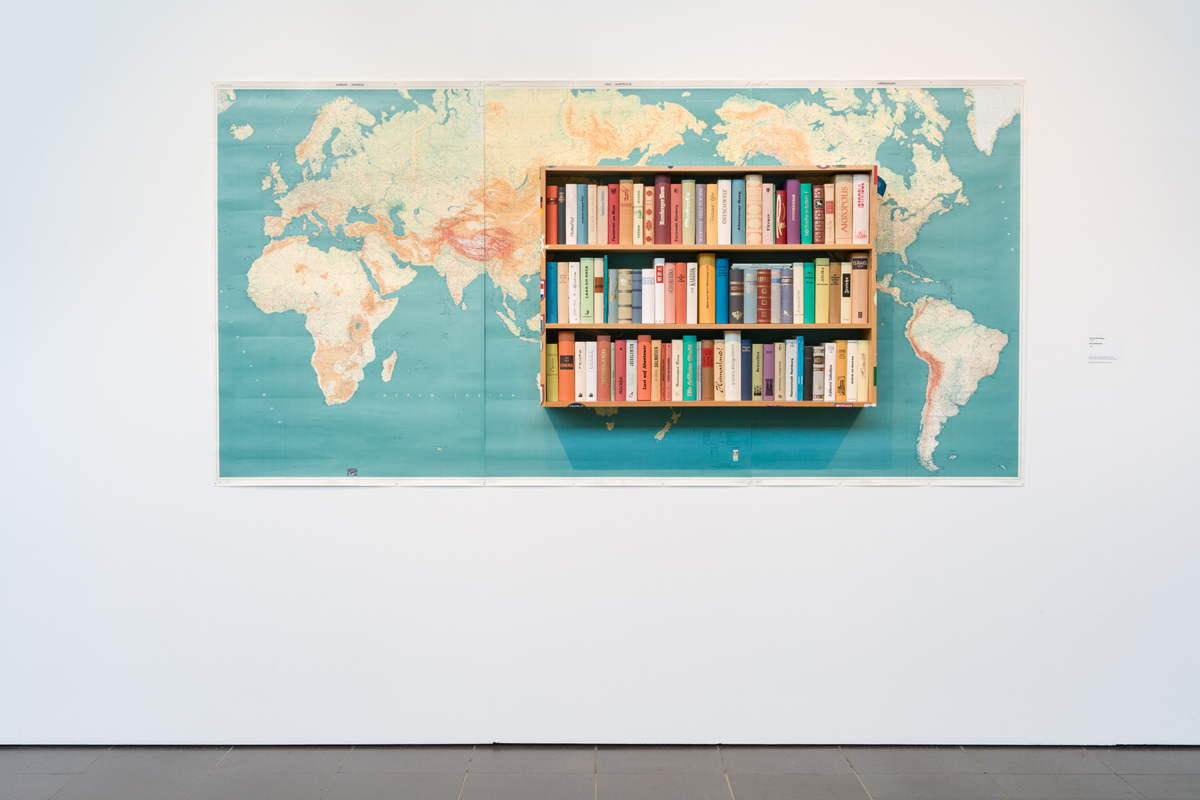Mental journey
Private and public spheres are becoming increasingly hybrid through technology.
Interview with Dagmar Keller
What was the most curious conversation of other people that you (un)intentionally took part in?
I haven’t actually found any of the video calls I’ve attended (unasked) to be curious. And I’m not at all interested in showing curious situations. On the contrary. The recordings were made in China and in most of the video calls Chinese was spoken. I only speak a few words of Chinese, so I had to interpret what I saw. In fact, I found many of the situations that played out before my eyes to be universal or archetypal:
Fathers kissing their children goodnight from afar. Flirtatious teenagers, couples giving each other longing looks. People who have just been jolted out of sleep by the call, rubbing their eyes in wonder.
Curious was perhaps rather the fact that in one of the most visited places of Shanghai in a never-ending stream of people these very private moments happened in this massing directly before my eye. On the one hand, this was due to the special place and the special mood at this location – I probably could have taken such photographs in only a few places in the world – and yet the photographs show something that could be observed anywhere in the world; that is, that private and public spheres are becoming increasingly hybrid through technology. I wanted to fix that photographically.

Were you uncomfortable whilst participating in some situations?
Who doesn’t know this situation of sitting in the train and overhearing a private conversation unintentionally.
For dear to me, however, I deliberately sought these situations, because I was fascinated by the fact that I could virtually “travel” from public space to a lot of diverse regions of China into the most diverse domestic situations and portray people there whom I would never have met in any other way.
But of course I was (and am) aware that not everyone will agree with what I’m doing. So at the beginning it was always a bit of an effort to get so close to people with the camera during a video call. To my astonishment, however, rarely did anyone react negatively to me. Many were of course absorbed by their video call and did not notice that I was photographing them, but there were also people who reacted to me and included me in their video call. Sometimes the people they were talking to were then introduced to me and I was allowed to take a picture of them. Sometimes even the other family members were called in and I was allowed to photograph them as well.
In other places and situations, people might have reacted quite differently to me and my camera, but the photographs were taken in a very special place. That is, at the so-called “Bund” in Shanghai, the waterfront along the Huangpu River, directly opposite the iconic skyline of Pudong. At least before Corona times, thousands of people made a pilgrimage there every evening to see the spectacularly illuminated skyline. The atmosphere was exuberant and many people there seemed to desire to share their experience with their loved ones back home. So they brought the live image of their loved ones from their private space, where they were perhaps sitting at the kitchen table or lying in bed, via video call on their smartphones into the public space.
For me, this opened up the possibility of a whole new way of portraying, in that I could include the image production of my counterpart and capture different spaces and perspectives in one image.

What’s it like in other people’s living rooms?
The interesting thing for me is that I got to see a wide variety of spaces and slices of everyday life: From brightly lit living rooms with prominently placed TVs where the whole family sat together, to the simplest private retreats, to packed dorm rooms where roommates could be seen in the background. Sometimes I saw partial views of different rooms during the video call. During a long video call that a father made from the “Bund” with his child, who was at home, the child walked through the apartment with the smartphone at some point and opened the bathroom door, where the obviously surprised mother was brushing her teeth with only a towel wrapped around her head.
Biography
- * 1972 in Donaueschingen
- Studied at the Academy of Arts in Düsseldorf and at the Academy of Media Arts in Cologne
- Lives in Düsseldorf and elsewhere
Exhibition
Bon Voyage!
Reisen in der Kunst der Gegenwart
13. November 2020 – 16. May 2021

